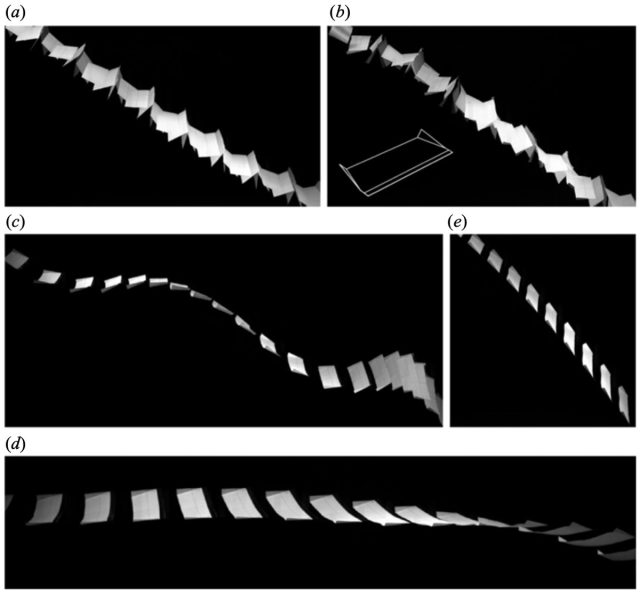Drop a flat piece of paper and it will flutter and tumble through the air as it falls, but a well-fashioned paper airplane will glide smoothly. Yet these seemingly simple structures involve surprisingly complex aerodynamics. Researchers at New York University’s Courant Institute of Mathematical Sciences conducted a series of experiments involving paper airplanes to explore this transition and develop a mathematical model to predict flight stability, according to a March paper published in the Journal of Fluid Mechanics.
“The study started with simple curiosity about what makes a good paper airplane and specifically what is needed for smooth gliding," said co-author Leif Ristroph. "Answering such basic questions ended up being far from child’s play. We discovered that the aerodynamics of how paper airplanes keep level flight is really very different from the stability of conventional airplanes.”
Nobody knows who invented the first paper airplane, but China began making paper on a large scale around 500 BCE, with the emergence of origami and paper folding as a popular art form between 460 and 390 BCE. Paper airplanes have long been studied as a means of learning more about the aerodynamics of flight. For instance, Leonardo da Vinci famously built a model plane out of parchment while dreaming up flying machines and used paper models to test his design for an ornithopter. In the 19th century, British engineer and inventor Sir George Cayley —sometimes called the "father of aviation"—studied the gliding performance of paper airplanes to design a glider capable of carrying a human.
An amusing "scientist playing with paper planes" anecdote comes from physicist Theodore von Kármán. In his 1967 memoir The Wind and Beyond, he recalled a formal 1924 banquet in Delft, The Netherlands, where fellow physicist Ludwig Prandtl constructed a paper airplane out of a menu to demonstrate the mechanics of flight to von Kármán's sister, who was seated next to him. When he threw the paper plane, "It landed on the shirtfront of the French minister of education, much to the embarrassment of my sister and others at the banquet," von Kármán wrote.

While scientists have clearly made great strides in aerodynamics—particularly about aircraft—Ristroph et al. noted that there was not a good mathematical model for predicting the simpler, subtler gliding flight of paper airplanes. It was already well known that displacing the center of mass results in various flight trajectories, some more stable than others. “The key criterion of a successful glider is that the center of mass must be in the ‘just right’ place,” said Ristroph. “Good paper airplanes achieve this with the front edge folded over several times or by an added paper clip, which requires a little trial and error.”



3175x175(CURRENT).thumb.jpg.b05acc060982b36f5891ba728e6d953c.jpg)

Recommended Comments
There are no comments to display.
Join the conversation
You can post now and register later. If you have an account, sign in now to post with your account.
Note: Your post will require moderator approval before it will be visible.